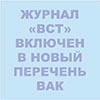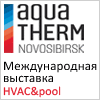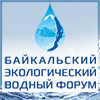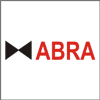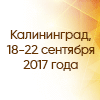Number 2 / 2017
To download all number in format PDF (in Russian)The further text is accessible on a paid subscription.
For authorisation enter the login/password.
Or subscribe
Number maintenance (pdf) (doc)
Number abstract (doc)
Literature lists to articles (doc)
|
bbk 000000
UDC 628.1.033
ALEKSEEV V. S.
Water and environmental factors in international conflicts
Summary
Deliberate destruction of life support systems in the zones of military operations has been a distinctive feature of present-day conflicts. Primarily these are energy facilities and public water supply systems. As an alternative to chemical weapons hazardous production facilities that have toxic substances in their production cycle are destroyed. As a result these substances get into the atmosphere, water sources and soil, and ultimately through drinking water and food products – into the human organism. The analysis of the environmental consequences of NATO bombarding attacks of the biggest cities in Serbia in March – May 1999 is presented. Targeted airstrikes and carpet bombing outcommissioned the systems of energy and water supply in Novi Sad, Panevo, Kraguevats, Bor, Bari, Novi Beograd and others. As a result dozens of thousands tons of oil products, mercury, dichloride ethylene, polyaromatic hydrocarbons, supertoxicants – dioxins and other toxic compounds got into the water sources including the Danube and its tributaries as well as into the soil within the vast territories. The facts of simultaneous fatalities were exacerbated by the latent effect of carcinogenic substances which allows defining the NATO actions as ecocide of the entire country. Considering the presented data there is sufficient ground for carrying out in Russia a serious analysis of water supply systems vulnerability, reservation of water sources and self-contained power supply.
Key words
ecological factors , life support systems , environmental emergency , highly toxic and carcinogenic substances , ecocide , water supply system vulnerability
Read more ...
|
bbk 000000
UDC 628.16.081.3
SEREDKINA E. V., Kvachan E. P., Nezhura E. A.
Nonchemical underground water treatment
(Case study of the Amur water intake, the city of Komsomolsk-on-Amur)
Summary
Until the present no economically available and environmentally substantiated process scheme of a land-based underground water conditioning plant in the Far East has existed. High concentrations of iron and manganese at low Eh and pH values predetermined the use of chemical methods of treatment. The comparison of two process flow schemes – chemical and nonchemical (with the use of catalytic filtering media) is presented. It is shown that the use of the technology with three chemicals is not the only possible solution. The use of imported equipment and chemicals makes the operator of the municipal water treatment plant dependent on the pricing policy of the supplier. A process flow scheme of water treatment tested under the real-time conditions of a water intake and approved for the introduction with the use of catalytic filtering media and Russian-made equipment is presented. The main task in developing the process flow scheme of nonchemical water treatment was enhancement of the treatment processes with the aim of reducing capital and operational expenses.
Key words
deferrization , demanganization , decarbonization , nonchemical underground water treatment , nonchemical method , catalytic filtering media
Read more ...
|
bbk 000000
UDC 628.113
Abul'fatov Asif Gara ogly
The technology of nonchemical purification of surface highly turbid water
Summary
При решении задач по повышению эффективности работы объектов водопроводно-канализационного хозяйства с целью улучшения качества обработанной воды большое значение приобретает снижение капитальных и эксплуатационных затрат. Для очистки поверхностных высокомутных вод предложен новый одноступенчатый безреагентный способ – капиллярное микросифонирование воды, а также конструкция установки для осуществления данного процесса. Принцип технологического процесса осветления воды основан на капиллярных явлениях – физических свойствах воды, обусловленных поверхностным натяжением на границе раздела несмешивающихся сред, жидкости и смачивающейся поверхности фильтрующего материала. Применение капиллярного микросифонирования исключает необходимость в реагентном хозяйстве, а также предварительной подготовки воды и обработки жидких отходов, образующихся в процессах очистки воды. Реализация одноступенчатой безреагентной энергосберегающей технологии в плавающих водоочистных установках типа УКМ, апробированных в процессе осветления высокомутных вод р. Куры, показала ее высокую эффективность при незначительных эксплуатационных затратах.
Key words
turbidity , surface water , chemical-free treatment , capillary water microsyphoning , filtering module
Read more ...
|
bbk 000000
UDC 628.17
Abilov Fazil Adil ogly, Agarzaiev Tural Mazakhir ogly
Losses in the water supply system of Greater Baku and measures on their elimination
Summary
The population of Azerbaijan numbers more than 9.5 million people; half of the population is supplied with drinking water from the public water supply system. The water supply of Greater Baku (Baku city, Sumgait city and Apsheron) is carried out from five sources. In some communities water leakages reach 40–50%. Water losses in the distribution networks result in increases in operational expenses and reduction of the water network integrity. Water losses in the networks are mainly due to the following: commercial losses – illegal connections; physical losses – leakages; losses at calculations – water meter errors. The results of theoretical studies and practical measures on eliminating leakages in water distribution networks are presented. All the technical data is based on the actual information obtained from the relative water supply system maintenance departments of «Azersu» JSC.
Key words
leakages , surface water source , water consumption , water supply system , water meter
Read more ...
|
bbk 000000
UDC 628.112.24:622.24
Romanov A. A.
The use of casing made of unplasticised PVC in the construction of water wells
Summary
The data on the practical experience of using pipes made of unplasticised PVC in the construction of water wells by the example of «AkvaStroiMontazh» Company is presented. The background of the emerging technology, problems in the introduction, the economic effect gained and other advantages are described. The use of casing made of unplasticised PVC in the construction of water wells facilitates work intensification, well cost reduction etc. Different patterns of technical and engineering factors influencing borehole curving (e.g., the dependence on the number of rolling cutters or bit blades) were defined. To prevent borehole curving special attention should be paid to the value of drilling bit weight and control of the rotation speed. These parameters are of prime importance for the drilling efficiency. Increasing the boring speed is the most evident method of well cost reduction. The experience of «AkvaStroiMontazh» Company proves the growth of using casing made of unplasticised PVC in water well construction in Russia. The innovative technology of well boring has a great potential and numerous advantages.
Key words
water well , drilling mud , casing made of unplasticised PVC , borehole curving , rolling drilling bit
Read more ...
|
bbk 000000
UDC 628.342
Riabchikov B. E.
Pulsation mixing apparatus for preparation of chemicals
Summary
One of the methods of liquid media mixing and chemical dissolution is pulsation mixing of liquid. This method was used in nuclear industry when absolute safety was required, whereas the presence of a man was eliminated. Pulsation mixing apparatus do not have any moving parts in the reaction zone of the apparatus and can be made of materials resistant to the chemicals used, mechanically undurable. The emergence of a large variety of plastics provides for the significant simplification of manufacturing mixing apparatus. Though they are somewhat behind mechanical mixers in energy consumption nevertheless they provide for more uniform mixing and possible operation after the reactor has been charged with solid chemicals. The mixing intensity can be regulated within a wide range. On the basis of advanced technology manufacturing pulsation mixing apparatus for the preparation of chemicals for water treatment that provide for easy regulating the mixing intensity for fast preparation of different chemical solutions was restored.
Key words
reagent , reactor , pulsation mixing apparatus , jet mixing , pulsation chamber
Read more ...
|
bbk 000000
UDC 628.161.2:546.34:544.726.3
Fedorova S. V., Kryzhanovskii A. N.
Lithium removal from underground water by ion exchange method
Summary
Supplying the population of the Sakha Republic (Yakutia) with drinking water in harsh environment has been a crucial task. In many Yakut communities there is a need in involving underground water in domestic water supply systems. One of the specific features of the chemical composition of subpermafrost water of the Yakut artesian basin is the presence of lithium in the concentrations significantly exceeding the maximum permissible values. This complicates considerably using this water for drinking water supply. Lithium removal from different solutions and brines for industrial use is reported; whereas the information on water treatment for domestic water supply that provides for lithium concentration decrease is lacking. The results of experimental studies of subpermafrost water treatment in Central Yakutia by ion exchange method that prove the efficiency and possibility of using sodium cycle for decreasing lithium concentrations in subpermafrost water are presented.
Key words
ion exchange , subpermafrost water , lithium , sodium cycle
Read more ...
|
bbk 000000
УДК 628.17.001.4
Fedorova S. V., Kryzhanovskii A. N.
Компания ООО «КСБ» вступила в Российскую ассоциацию производителей насосов
Read more ...
|
bbk 000000
UDC 628.16.066.7
Volftrub L. I.
Upgrade of clarifiers at energy facilities with the use laminar modules
Summary
The need for upgrading clarifiers of obsolete and outmoded design is substantiated. The clarified water quality and capacity of these facilities do not meet the modern water treatment requirements which can be explained by the design and technological characteristics of these facilities. The suggested technical solutions aim at the elimination of such deficiencies as unstable turbulent mode of the suspension settling in a sufficiently high layer (1.5–2 m), low volume utilization factor of clarifiers, the lack of an efficiently operating flocculation chamber. The experience of introducing laminar modules in the water treatment sections of energy facilities is quoted. The upgrade of pretreatment facilities, production of clarified water with low suspended solids, iron and organics concentrations will provide for improving the technical and economic performance of the water treatment units and introducing advanced technologies at the subsequent water treatment stages.
Key words
natural water , membrane technology , clarifier , honeycomb module , pretreatment , laminar module
Read more ...
|
|



